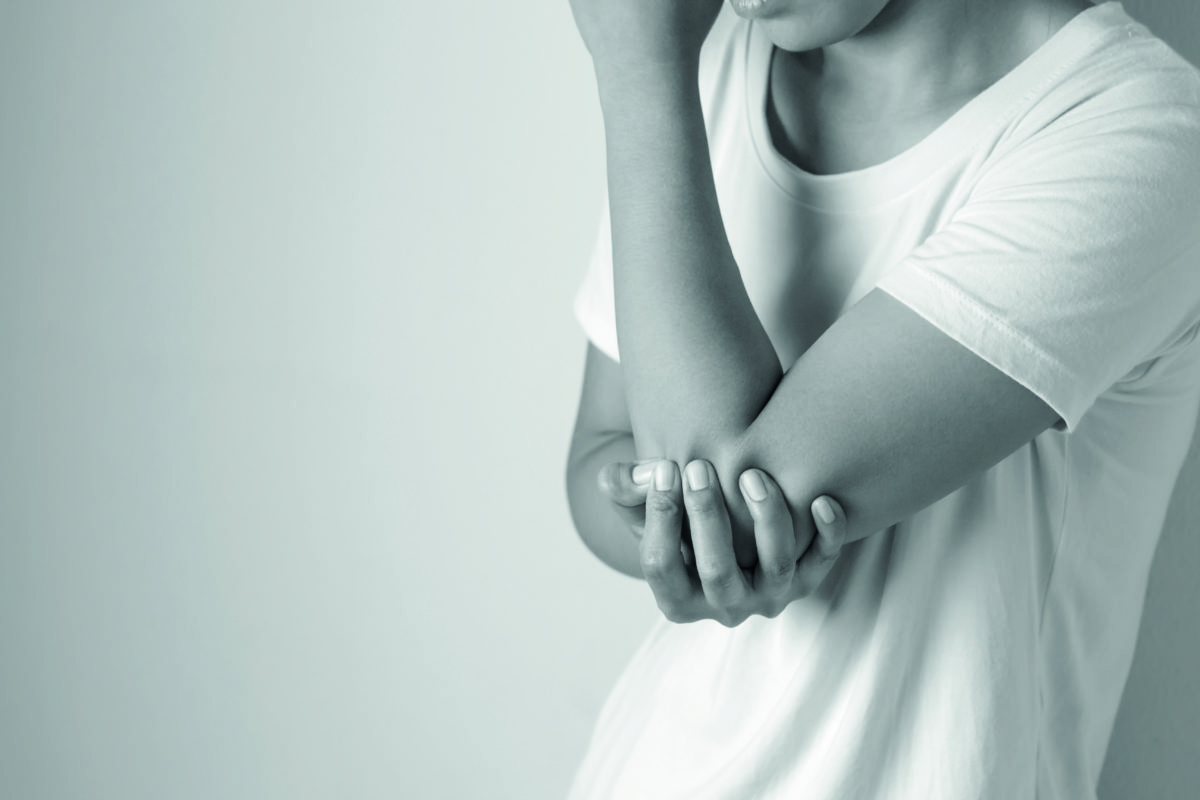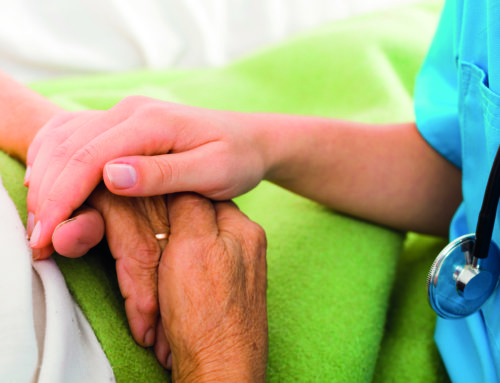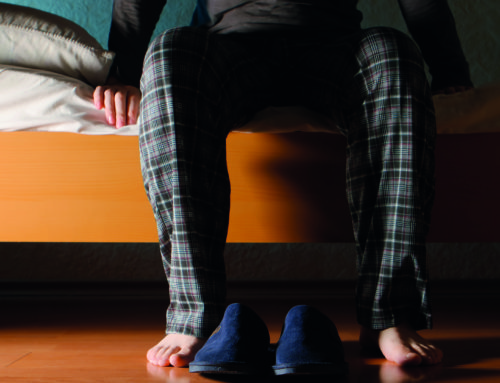One-in-1,000 children and young people are living with juvenile idiopathic arthritis; a type of arthritis that causes widespread pain, stiffness and fatigue. SPR presents clinical and patient views about being diagnosed with arthritis during childhood and adolescence.
Francesca’s Story
24-year-old Francesca White has lived with juvenile idiopathic arthritis (JIA) for eight years. She has battled severe pain, alongside multiple surgeries and treatments, which at times have taken their toll on her mental wellbeing. The condition has had an impact on Francesca’s education and social life, and she has missed out on plans with friends and family due to the pain and fatigue, which has often left her feeling isolated and excluded.
Despite the physical and emotional impact of JIA on Francesca’s life, she maintains an extremely positive outlook and always finds the strength to make the most of any situation. She has just finished reading Psychology at the University of Greenwich and looks forward to a career in counselling to help other people experiencing some of the challenges she has overcome.
Speaking to SPR, she offers an insight into her life since being diagnosed.
When did you or your parents first notice symptoms of the condition? Did you immediately know that’s what it was? I was officially diagnosed with JIA when I was just 16 and preparing for my GCSE exams. I’d been feeling poorly for years before this, and doctors suggested that it might be growing pains, stress, and all sorts of other things. I think maybe because I was so young, no one mentioned arthritis.
Finally, I was diagnosed at the Versus Arthritis Centre for Adolescent Rheumatology at Great Ormond Street Hospital, and within two weeks I was on treatment to start coping with the disease. It was a huge shock and my family and I had to adjust massively.
What has your experience of the symptoms of JIA been like? How has the condition impacted on your life?
When I was first diagnosed, I found it really tough. It was almost like a bereavement. I had lots of ideas about what I wanted to do, but being unwell from a young age meant I had to reconsider things, which was difficult to get my head around.
There have been extended periods of time where I haven’t been well enough to go out. After surgeries it has been particularly difficult as recovery can take months and surgeries to my jaw have knocked my confidence, as they make my face look and feel completely different. Generally, pain and discomfort make me feel grumpy and down, which can be hard for friends and family to see.
Starting methotrexate and trying to get through my GCSEs was horrible. While the medication lessened the joint pain, it didn’t control the arthritis completely.
When I started studying Biomedical
Sciences at University of Westminster, my arthritis was really bad and made it too difficult for me to continue living away from home while studying. I moved back home and applied for an Open University course in Counselling and Psychology, which I’ve just finished.
I have now applied to study a doctorate in Counselling Psychology. I’m particularly interested in mental health interventions at the stage of diagnosis for people with arthritis. I’ve learned from my own experiences how important this is.
Were you or your family familiar with this condition in children prior to your diagnosis?
No, I wasn’t familiar with children having arthritis. I don’t think my mum and dad were familiar with JIA either. My diagnosis came as a real shock to us all even though my dad has psoriatic arthritis. We just never thought it would happen to me so young.
How are you managing your condition now?
Most of the pain in my joints is quite well-controlled with medication now, but over the years I’ve had periods of remission and very severe flare-ups and lots of surgery. As my jaw joint is the worst affected, it can be difficult to eat and speak.
I’ve been on lots of different medications, including steroids, methotrexate and biologics. I like to research each one to make sure that I fully understand the differences in available drugs and therapies. Information has been important for my family too as it can be daunting changing medication because of side-effects.
What treatment options have worked best for you?
So far, Humira has been the most effective treatment. I have been on it for around five years now and although I still get flares, especially during stressful times, overall my arthritis has been more controlled.
What support can you recommend to other young people and families with the condition?
I’ve had counselling over the years to come to terms with JIA. This has been, and is still, such an important coping mechanism for me. I can talk to someone about my condition and develop strategies for the harder times. Also, the charity Versus Arthritis have provided support. With their help, I have been able to meet other young people with arthritis. It’s lovely because I can talk to them and they totally get it.
I’ve found support groups on social media helpful too. On those days when I can’t do anything it’s nice to feel like I’m not the only one. There are other people my age, or younger than me, who are going through a very similar thing. Of course, I have extremely supportive friends and family. I made it very clear when I went back to university for the second time that I might struggle, and they’ve been amazing.
Do you have any advice for how healthcare professionals can better manage JIA for patients going forward?
I would encourage GPs to always consider arthritis as a possible diagnosis for children if they present with any of the symptoms, like I did. I would also ask them to really take the time to fully explain the condition and what is likely to follow for the patient and their families or carers. A diagnosis can be life-changing and the mental impact can be very challenging.
Personally, I found it hard adjusting to a new way of life with a condition I felt I had very little control of. The pain and fatigue can be severe. I’ve mentioned the effect on mental health – I felt silly for feeling down. I was never really asked how I was coping with the disease; instead questions were focussed specifically on the pain or side-effects of
treatments. Mental health awareness is essential, and I think more could be done to support young people and families at every stage of their journey.
Through Expert Eyes SPR speaks to Dr Flora McErlane, Consultant
Paediatric Rheumatologist at Great North Children’s Hospital, and spokesperson for charity, Versus Arthritis, to find out more about the condition. Dr Mc Erlane offers her expert insight into JIA, including the diagnosis and treatment options.
What are the distinguishing features of JIA?
JIA usually presents with a combination of stiffness, swelling and / or pain affecting one or more joints. Young people with systemic on-set JIA may be very unwell around the time of diagnosis, but children with other subtypes are usually well in themselves. Fatigue is very common and unusual tiredness may be something that parents and carers may notice first.
For healthcare providers to make a diagnosis of JIA, a series of indications should be present. These are the child having arthritis for more than six weeks with symptoms evident before their 16th birthday. Other conditions that can cause arthritis should be excluded, for example, an infection. It’s possible that exposure to infection may trigger the on-set of arthritis in some children.
The cause of JIA is not completely understood. We know that it’s an autoimmune disease, indicating that the immune system is overactive. This causes inflammation (arthritis) in one or more joints and sometimes in the eyes, which can occur at any time.
How difficult is the diagnosis process?
We observed that an arthritis diagnosis can be shocking for the parents and carers of children with JIA. This is usually because they are children and arthritis is considered an older person’s condition. That being said, there is often a sense of relief, to finally bottom out what is causing ill health. It’s a mix of emotions but we try to be as supportive as possible
The diagnostic process for JIA can be very involved. If blood tests and x-rays are normal they can help to rule out other causes of chronic arthritis. This is where we would be looking at infection. Joint pain in children is relatively common and most is mechanical in origin. It’s not associated with underlying disease. Considering all of this, it can be difficult for families and healthcarem providers to distinguish between joint pain that is benign and pain that isn’t. As a result, JIA diagnosis can be delayed.
What’s the long-term outlook for JIA? What are the main treatment avenues?
The aim of treatment is to completely control the arthritis and reduce symptoms to prevent long-term joint or eye damage. Obviously, all children and young people with JIA should have the opportunity to live as well as possible. The positive news for patients is that long-term outcomes are usually very good for anyone who has access to a full multi- disciplinary team and modern treatment and therapies.
Steroid medications work immediately and are usually used at the on-set of JIA or during a disease flare. It’s found that steroid injections to affected joints are often well- tolerated and cause few side-effects, but each patient is an individual and it’s important to develop the right treatment plan for them. If four or more joints are affected, steroid injections alone are unlikely to control the disease in the longer-term. This is when systemic immune suppressing medications, such as methotrexate, will usually be commenced. While, it’s a very effective drug for arthritis, half of young people will need an additional or alternative medication. Examples of these are biologic medicines, such as etanercept, adalimumab, and tocilizumab which support in managing inflammation.
How can the condition impact on a child’s life?
A diagnosis can be life-changing. Young people and their families typically need support in managing the impact of JIA. Support is really necessary in several areas: physio, occupational therapy, clinical psychology are all essential to ensure that young people maintain good physical and psychosocial health. Life and personal development shouldn’t be put on hold because of a diagnosis.
How progressive has society’s understanding of JIA been?
Although the majority of young people with JIA are open about their illness, many report a persistent lack of understanding by others when it comes to their illness and its symptoms. JIA can be ‘invisible’ to peers, teachers, and employers. Increasing public awareness of JIA remains a priority, with the aim of better informing families, schools, healthcare professionals and policymakers
For more information about JIA, or another form of arthritis, visit www.versusarthritis.org. Learn more about the impact of musculoskeletal conditions using the charity’s guidance for healthcare providers www.versusarthritis.org/about-arthritis/healthcare-professionals/musculoskeletal-impact-toolkit.








